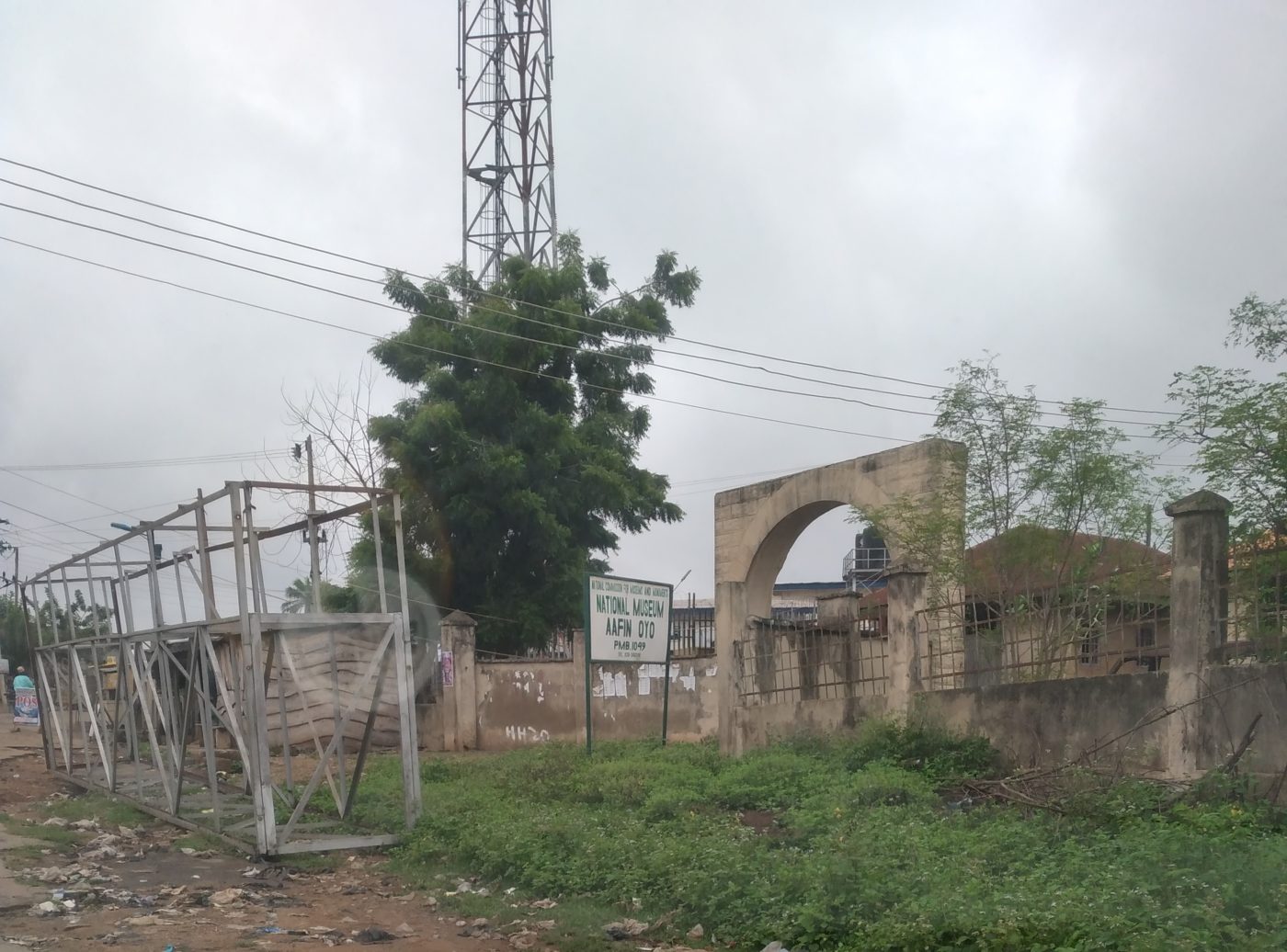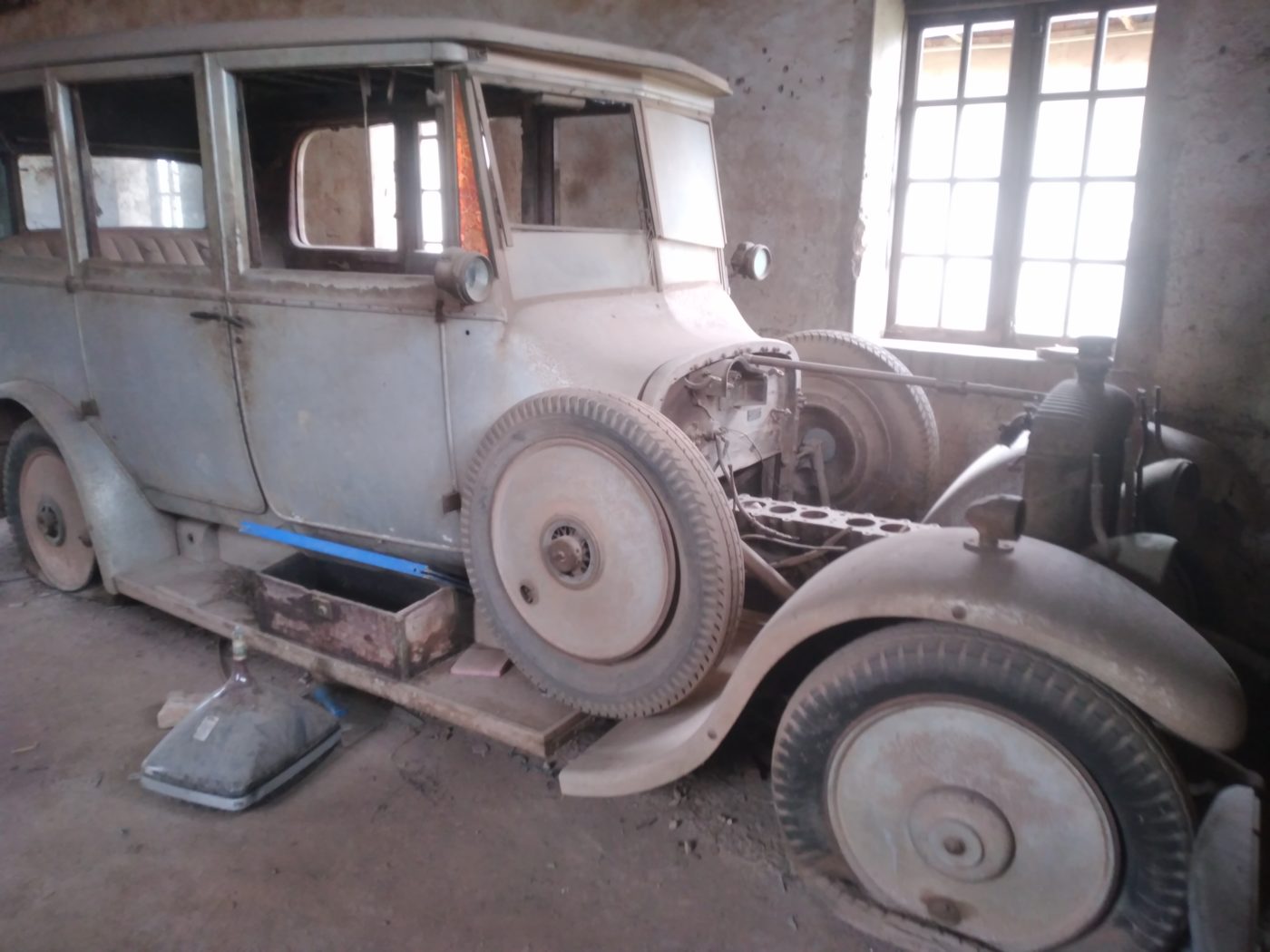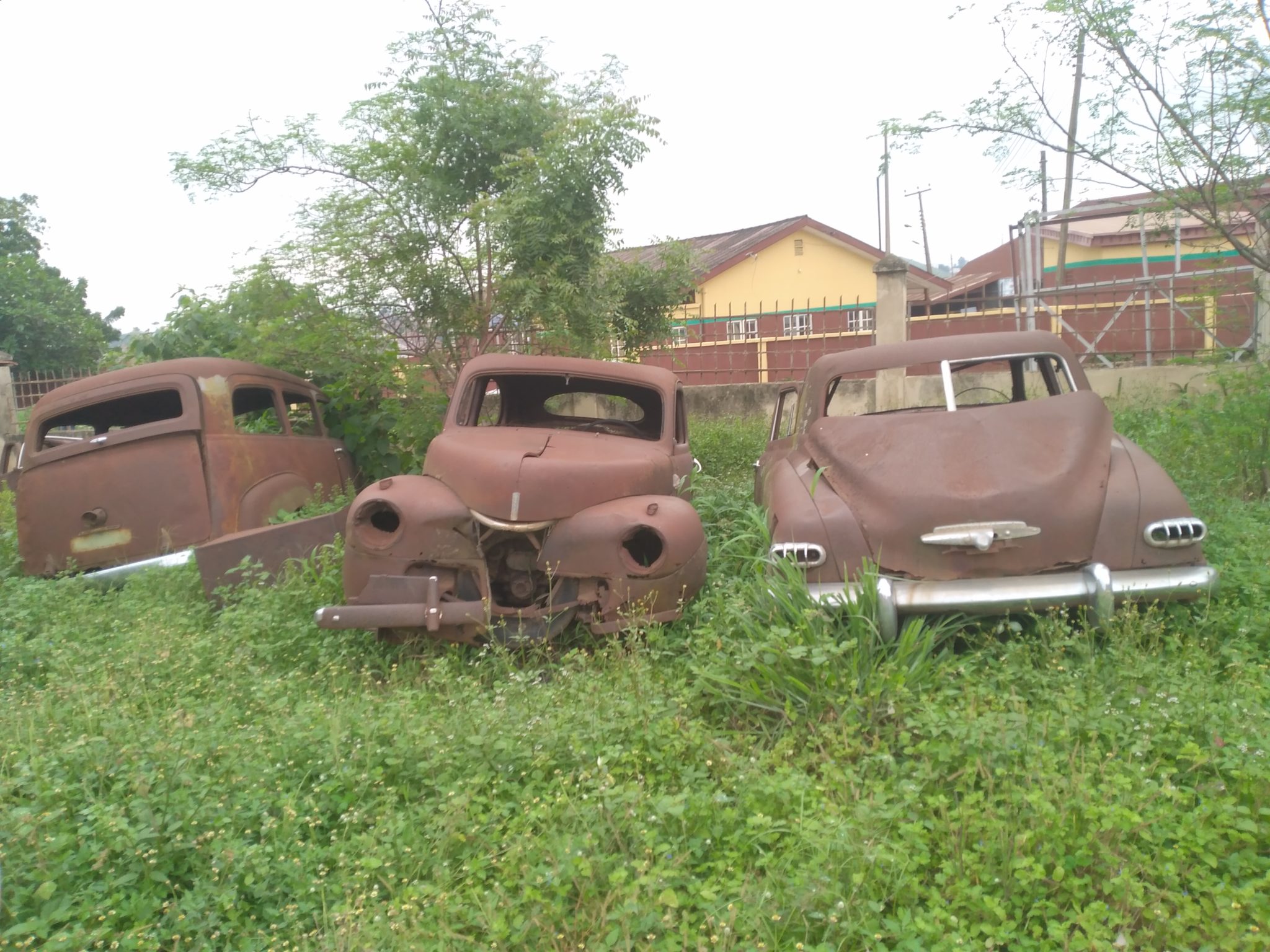I was recently at the National Museum located in the palace of the Alaafin of Oyo and even though I spent a substantial part of my childhood in Oyo, it was my first time at the museum. Most people who grew up in Oyo do not know that there is a museum there. It could also be the usual familiarity which makes many people regard things that are out of their reach and ignore the ones within reach. The museum, as described by friends who had visited, is located close to the palace – Aafin Alaafin Oyo (the seat of the Oyo imperial monarch). Noon was approaching when I arrived at the palace. I asked some men sitting at one of the palace gates where the museum gate is, they pointed me to the museum gate and I entered. On getting to the museum, the gate looked locked and the compound was bushy so I was not sure whether any activity was going on inside. On getting in, I was met at the door by a man who confirmed that the museum was open to visitors.
He told me the entry fee and proceeded to begin his work of taking me round by explaining that Nigeria has many museums and there are different types of museums. He told me that there are Unity museums, Pictorial museums and Colonial history museums. He went on to state that the one in Oyo is a general history museum. His lecture on Museums in Nigeria made me think about how multilayered Nigeria’s history is. Nigeria is reputed as a country where memories are ignored across institutional levels. Most of the attempts at preserving any aspect of Nigerian history are either individual or private sector led. When the Obasanjo military administration established the National Commission for Museum and Monuments in 1979, it was to succeed the Federal Antiquities Department and ‘manage the collection, documentation, conservation and presentation of the National Cultural properties to the public for the purposes of Education, Enlightenment and Entertainment.’ One of the most important ways in which the commission should fulfill its purpose is to manage museums that are spread across the country but the commission has not done a very good job with that. Museums are where institutional and collective memories are kept. The items inside museums are a people’s collective patrimony. It is why it is an aberration for Western countries to continue keeping artifacts belonging to other countries and display them in their museums.

Some would argue that museum tradition is foreign but so is the idea of Nigeria’s official language and political system. Nigeria has many types of museums. The Museums of Unity were established after the civil war to hold artifacts from different parts of the country. There is also a National War Museum, Umuahia, the National Museum of Colonial History, Aba and the Nigerian Army Museum, Abuja. In spite of these laudable museums, there remain several aspects of Nigerian history that are unpreserved. I believe Nigeria’s musical history is enough to hold its expansive musical items in a museum of popular music. The history and legacy of religions in Nigeria is also worthy of being recorded and stored in a museum.
The curator at the Oyo Museum is very intelligent and I couldn’t connect him to the decrepit state of the museum with dusty artifacts and a bushy compound. I wonder how he feels talking vibrantly about items that are not well maintained. He informed me that I was not allowed to take pictures of the artifacts inside the museum when I asked. I was disappointed when I saw that the first sets of items in the museum are pictures of artifacts, knowing that many of these artifacts are in foreign museums being accessed by people whose connection to it is something to be ashamed of. Despite this, the curator meticulously gave a detailed explanation of the items. I was so impressed that I wondered if he had seen the items himself or if he had perfected the explanation by experience. There are images of the Nok Terracotta, the Igbo Ukwu Bronze artifacts, the Ife Bronze head, the FESTAC 77 logo, items from Owo, Benin and some other parts of Nigeria. His response to my comment that many of these items are displayed in foreign museums was one of indifference, he simply shrugged.

The next section of the museum hosts some Yoruba traditional religious items that might not look like museum material to some culture bearers and some of us who grew up around practitioners of African Traditional religion. There is an ère ìbejì, a staff of Sàngó, carving of Èsù and a big Ifá divination bowl (Ọpọ́n Ifá,) the size I have never seen before. I enquired why it was that big, the other curator said it is a special bowl used for communal divination. There are also some ritual pots in the museum but nothing about some of them showed that they are ritual pots. They are better displayed as ancient pots because they look like ordinary pots, whatever their previous use was. Even if they are mystical items, their existence in the museum has removed their mystical value because the museum is alien to Yoruba thought and culture. The museum is only a site of memory, not a site of religion or traditional culture.
The most impressive item in the museum is a small ante room carved out as a Sàngó section. Considering that Sàngó is an important figure in Ọ̀yọ́ history, this section is fitting. The section has life size carvings of Sango and his wives. It is also painted red for emphasis. At the entrance of the ante room is a colonial section with a big coal stove, the type I have never seen before. The curator said it belonged to former Anglican missionaries. Some colonial images are also on display in the section. A picture of the house where Captain W. A. Ross, District Administrator of the Ọ̀yọ́ Division lived in Ọ̀yọ́ is displayed. I remember having seen the building, overgrown with weed around Apitipiti in Ọ̀yọ́ and I asked if it is now preserved, the curator replied that ‘we are supposed to have preserved it but we have not gone there to cut the weeds.’ Images of some colonial tombs and a church building inside the old Saint Andrews College are also displayed. While some would argue that colonial items should not be displayed as part of Nigerian history, I think they are an important part as they represent an important era in history, despite the trauma.
The museum also has a section for Gẹ̀lẹ̀dẹ́ masks, Ẹpa masks and the carvings of a hunter in his full element. I was also enthralled by a beautiful elephant tusk carving. In my fascination, I caught myself wondering whether the elephant was killed for its tusk or it was dead before the tusk was removed. The section also has a big Ayò Ọlọ́pọ́n which was carved like an Ifá divination board, complete with the figures. The carving shows an intersection between Yoruba spirituality which Ifa embodies and the recreational life of the people. It suggests a tolerance rather than the profanity of the sacred. This is the kind of tolerance missing in Abrahamic religions. One of the few things that are common to all Nigerian museums is the currency section which exists in the Ọ̀yọ́ Museum too. The section traces the history of legal tender in the country, from cowries to the British Pounds and the modern Nigerian Naira now in use.
The museum tour was rounded up at the drum section with the display of drums and an old doorpost. It was interesting to learn from the curator that doorposts carried messages about the places they secure. The doorpost at the museum had carvings of people farming, hunting and fishing. The curator noted that those were the common occupations in the town where the doorpost existed. When I was about to leave, I queried whether people do visit the museum and the curator answered in the affirmative. He noted that most visitors come from outside town. I imagine that most people come in search of memory and history but are confronted with a rich but ill maintained museum. I also noted that the architecture of the museum looks like colonial architecture and the curator said it used to be the Native Authority building where the Aláàfin Adéníran Adéyẹmí, father of the current king of Oyo held meetings in his days. The brilliant curator asked if I had any questions and I said no, knowing that the questions I have are not for him. He had done so much already and he played his own role well. The questions I have are about acquisition, preservation and maintenance, questions I know are for senior officials of the National Commission for Museum and Monuments. The curator does not know the history of the weather beaten vehicles in the compound but he took me to an old garage where Aláàfin Siyanbọ́lá Ládìgbòlù’s old vehicle was parked, abandoned to fate. As I stepped out of the museum into palace grounds, I was confronted by well dressed beggars who hailed me and begged for money. Immediately, a drummer started drumming and coming towards me. I knew he was simply doing his job but it felt like extortion so I was quick to give him some money so he could leave me alone. This incident reminded me of why they called drummers and musicians alágbe (beggars) in the olden days. I left the museum with my mind yearning for more unshelved memories.
Ayọ̀délé Ìbíyẹmí is a reader who writes occasionally. He works at the intersection of literature, Life Writing, Popular Music, Tech, (Multi)Media, History and Art. For him, language is very important and words are what make the world livable.
